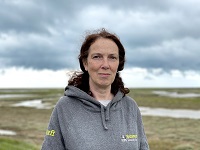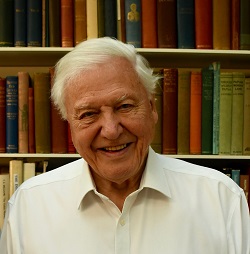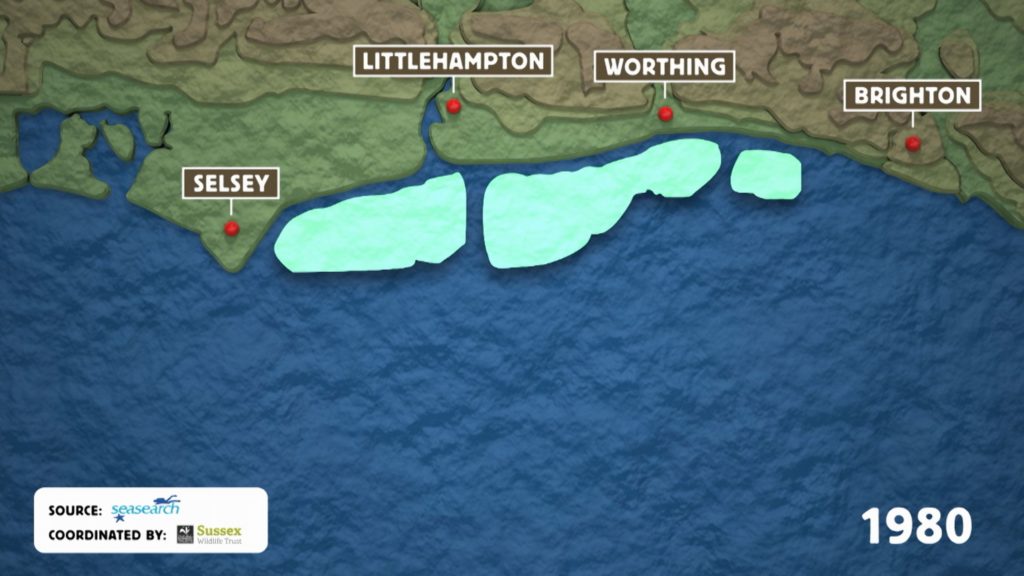What’s your role at Sussex Wildlife Trust, and what is the trust’s involvement with the Sussex kelp forest?

I’m the Director of Conservation Policy and Evidence at Sussex Wildlife Trust. We’ve been involved from the beginning when the Help Our Kelp partnership was established.
With support from Sir David Attenborough, the Help Our Kelp partnership successfully campaigned for the implementation of the new IFCA byelaw to protect the seabed off the Sussex coast from bottom-towed trawling gears. The Sussex Nearshore Trawling Byelaw was agreed in March 2021.
Prior to that, our work was primarily about the lobbying and drawing together the interest in research and monitoring. Since the byelaw was agreed we have rebranded – we’re now the Sussex Kelp Restoration Project. Now the focus is on bringing together scientists and other stakeholders to monitor and benchmark the process and do what we can to ensure the success of the restoration.
A huge number of organisations are involved, all with the same mission – we want to see the restoration of the Sussex kelp forest and make sure the new byelaw is a success.
What is the Sussex kelp forest? How can it help reduce carbon in the atmosphere?
In the 1980s there was a huge kelp forest off the coast of West Sussex, but within just a few decades it has pretty much all gone, as there is less than four per cent of the original forest – it’s shocking. Marine ecosystems have been decimated globally.
Part of the reason this happened is because the Sussex kelp forest is not visible – it has been described as “out of sight, out of mind’. We all know where the South Downs National Park is, but do we know what is underwater, so near to our homes?
It was identified that trawling was the major reason why the kelp was not getting the opportunity to regenerate. As long as trawling remained, it was not going to have a chance.
Kelp is a macro-algae that draws down carbon (in the form of carbon dioxide) as part of its growth process. It is not like a tree as it does not have a root reaching into the ground, but it has a holdfast, holding it in place. Kelp breaks down seasonally.
We are doing some research with the University of Brighton and the University of Portsmouth looking at the carbon flows of kelp and we’re really excited to be working that out.
Allowing ecosystem regeneration is sometimes called “animating the carbon cycle” – creating more biodiversity and more bio-abundance. All biomass is essentially carbon that has come from somewhere.
We are looking to see the restoration of seabed ecosystems. We know the climate crisis and the ecological crises are inextricably linked. Ultimately, we know restoring the ecosystems is a good thing for our global situation, and such an exciting journey for us all in Sussex.
What does the byelaw mean for the kelp forest? What are the plans now the byelaw has been agreed?
The critical thing we are doing now is benchmarking and monitoring the kelp, to demonstrate the impact of the byelaw.
The good news is it is already coming back, in places like offshore from Widewater – this is what happens when you give nature a chance.
We are looking at where it is coming back, whether there are limitations, and things like whether the kelp is having an impact on the amount of lobsters our local fishermen are catching, for example.
Lobsters are wildlife of course, but also a commercial species. Just because trawling is banned from the area, it does not mean other types of fishing are banned. Potting and static netting are still permitted in the area.
In terms of other species which could flourish – lots of people don’t know we have sharks off the coast of Sussex, such as cat sharks, which are really beautiful. We also have conga eels, cuttlefish, spider crabs and so much more.

Sir David Attenborough has been a big supporter of your campaign – how important has it been having him involved?
David Attenborough goes beyond celebrity status for an awful lot of us working in conservation. His endorsement is so important.
We have all seen Blue Planet. A lot of the series featured places like the Galapagos for example – but this is what Blue Planet looks like if you bring it home.
The Sussex kelp forest is our own barrier reef and we should be proud of it.
How could the kelp forest help the region achieve net zero carbon emissions?
It’s not an offsetting project, but the natural restoration of the kelp will be drawing down carbon for everyone’s benefit. We do not know yet if there is a need for active (assisted) restoration, or what techniques could be used to do that, but as and when the need is identified there is an appetite locally to support this.
It will benefit all sorts of communities – including divers and those with an interest in water sports, as well as our local fishermen. We are really interested in finding out more about the social and economic benefits of a restored kelp forest. We all want to see healthy habitats and nature flourishing.
What are the challenges and opportunities for the region with regards to sustainability?
In terms of the challenges, each company producing its carbon reduction plan needs to be brave enough to make a real change in the way it operates. Sustainability is not about business as usual, it’s about changing the way we do things. Some of that is going to involve real bravery from our businesses and sometimes they are going to have to take a leap of faith.
It’s critical that we all do it, and consider the travel we use, and the carbon we produce as a result of our businesses – directly and indirectly.
In terms of opportunities, the pandemic has shown us different ways of working. Organisations need to look at the carbon benefits and see what the lessons learned can be.
Everyone needs to think carefully about the long-term relationship with the goods they buy. You can always make more sustainable choices – and sometimes this costs more, but increasingly these choices are becoming normalised, and therefore cheaper and more available.


